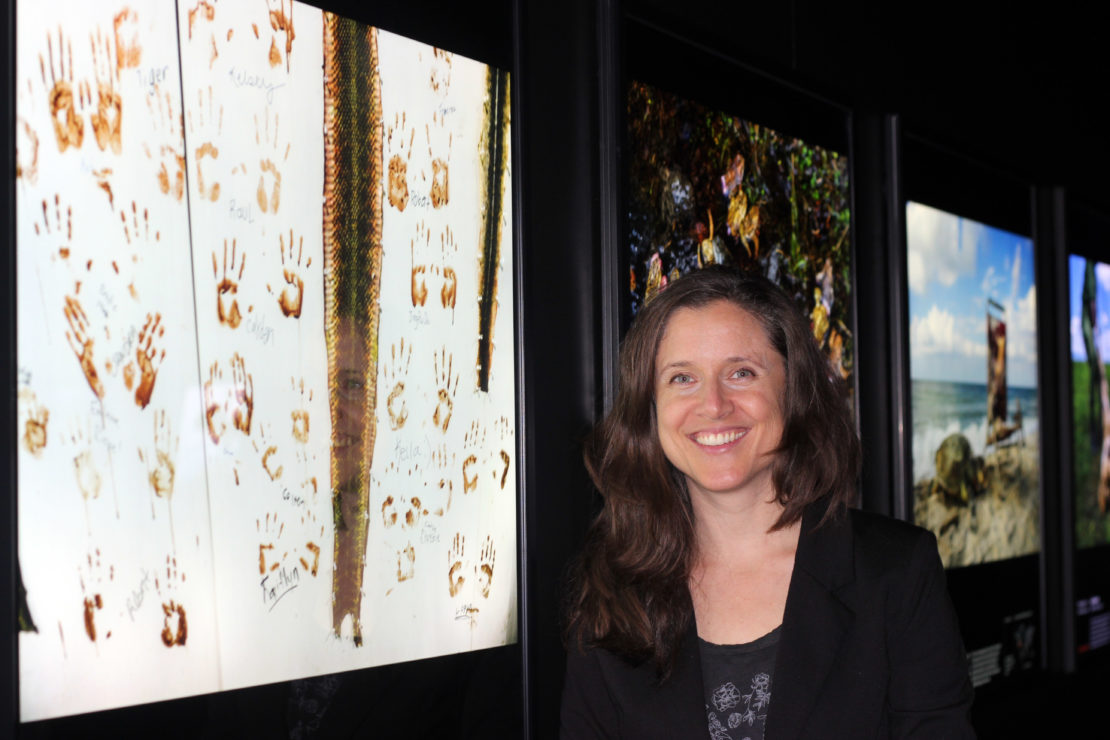The 55th annual event at the Royal B.C. Museum features Canadian photographers who use their art to make a statement

To Joanne Orr — Deputy CEO and Vice-President of Collections, Research, and International Programs at the Royal B.C. Museum — the 55th annual Wildlife Photographer of the Year exhibition is about more than simply showcasing stunning photography.
“This exhibition focuses on the beauty of nature as our life support system and highlights the interdependence of people, plants, and animals in the natural world,” said Orr. “These images invite us to consider the local implications of larger global issues: the fragile health of our polluted oceans, for example, or the dramatic consequences of global warming.”
Human beings are visual creatures, and skilled photographers and photojournalists find their medium more effective than in print alone at compelling people to stop and think about an issue. For the three Canadians featured in the exhibition, photography is a way to promote awareness about animal welfare and conservation.
Jo-Anne McArthur, Canadian investigative animal photojournalist and founder of We Animals Media, stood next to her photo, “The Wall of Shame.” Highly commended in the Photojournalism category, the image stands out from those around it. The background is stark white, and covered in children’s handprints — at first glance, the picture is reminiscent of a kindergarten class’s finger painting project. Except that the handprints are in blood and they surround the pinned-up skins of snakes.
McArthur took the photo at the Sweetwater Rattlesnake Roundup in Texas, where tens of thousands of rattlesnakes are beheaded. Once they are decapitated, McArthur says, children are encouraged to take part in ripping off the skins before triumphantly pressing their bloodied hands to the white wall. Many sign their names, the childish printing a stark contrast to the gore.
McArthur’s photojournalism — which has taken her into factory farms under the cover of night to document the conditions under which animals are kept — is driven by activism, and her motivation for taking this photo was no different.
“We want the public to not attend, so we want their funding to go down,” said McArthur. “We want to put international and local pressure to create a non-lethal roundup.”
Photos, he feels, offer a better opportunity to create dialogue and education with the public.
McArthur loves the Photojournalism category of the Wildlife Photographer of the Year competition for its power to wield influence, even though people often don’t want to know about the reality revealed in the images.
“The big challenge for people who do animal photojournalism is people don’t want to face it,” she said. “Not only because generally we don’t want to face cruelty but … these images ask us to face our own complicity in the cruelty.”
Canadian biologist-turned-photographer Jason Bantle turned to what he calls the “universal language” when he realized that images could be a more effective way to reach people.
“I did a [master’s degree], I was working as a researcher, but I just wasn’t getting anywhere with the message,” said Bantle. “It’s hard to get those words out and get them out to the public.”
Photos, he feels, offer a better opportunity to create dialogue and education with the public.
Bantle frequently works in the Arctic, and so his photo “Lucky Break” — which was highly commended in the Urban Wildlife category — of a raccoon poking its head out of the broken windshield of an abandoned car is an unusual image for him to capture. Even so, he says it still speaks to the importance of wildlife conservation.
“We’ve got human-left refuse,” said Bantle. “We’ve got an adaptable animal that’s managed to make a living out of there and actually have a survival advantage because its predator can’t get to it. Yet, let’s be real, there are a lot of animals that aren’t adaptable like raccoons.”
The way the world is going, Bantle says, the future is going to hold a lot more raccoons and a lot fewer of many other species.
“We’re gonna have those species that are opportunistic species and not specialists,” he said. “We’re going to have a much more simplified ecosystem.”
Françoise Gervais’s photo “The Challenge” is one that you have to stand close to. Her subject, a polar bear, is dwarfed by the rocky cliff the animal is scaling. Gervais is a lover of minimalism and negative space, a style that often allows her to include vast swaths of the environment around the creatures she photographs. “The Challenge” was shot in August, Gervais says, meaning that the bear had been hungry for months awaiting the return of its seal hunting grounds on the sea ice.
“The sea ice period is shorter and shorter,” said Gervais. “One of the challenges that [polar bears] face right now is they spend more time on the land. I mean, one or two weeks is a big difference when it’s been months.”
The image was highly commended in the Animals in Their Environment category, which the Canadian photographer and Antarctic expedition leader says made her very happy. Conservation, she says, is the driving force behind her work.
“That’s always in the back of my mind, to include the habitat,” she said. “[It’s] so special to be able to go [to polar regions], it’s almost like a social responsibility to share about it.”
Responsibility is something that the Wildlife Photographer of the Year exhibition takes seriously. Many of the photos chosen have a message to impart, and were selected for more than just their technical brilliance. It is a striking display, and one that, as Orr said, invites the viewer to think.








